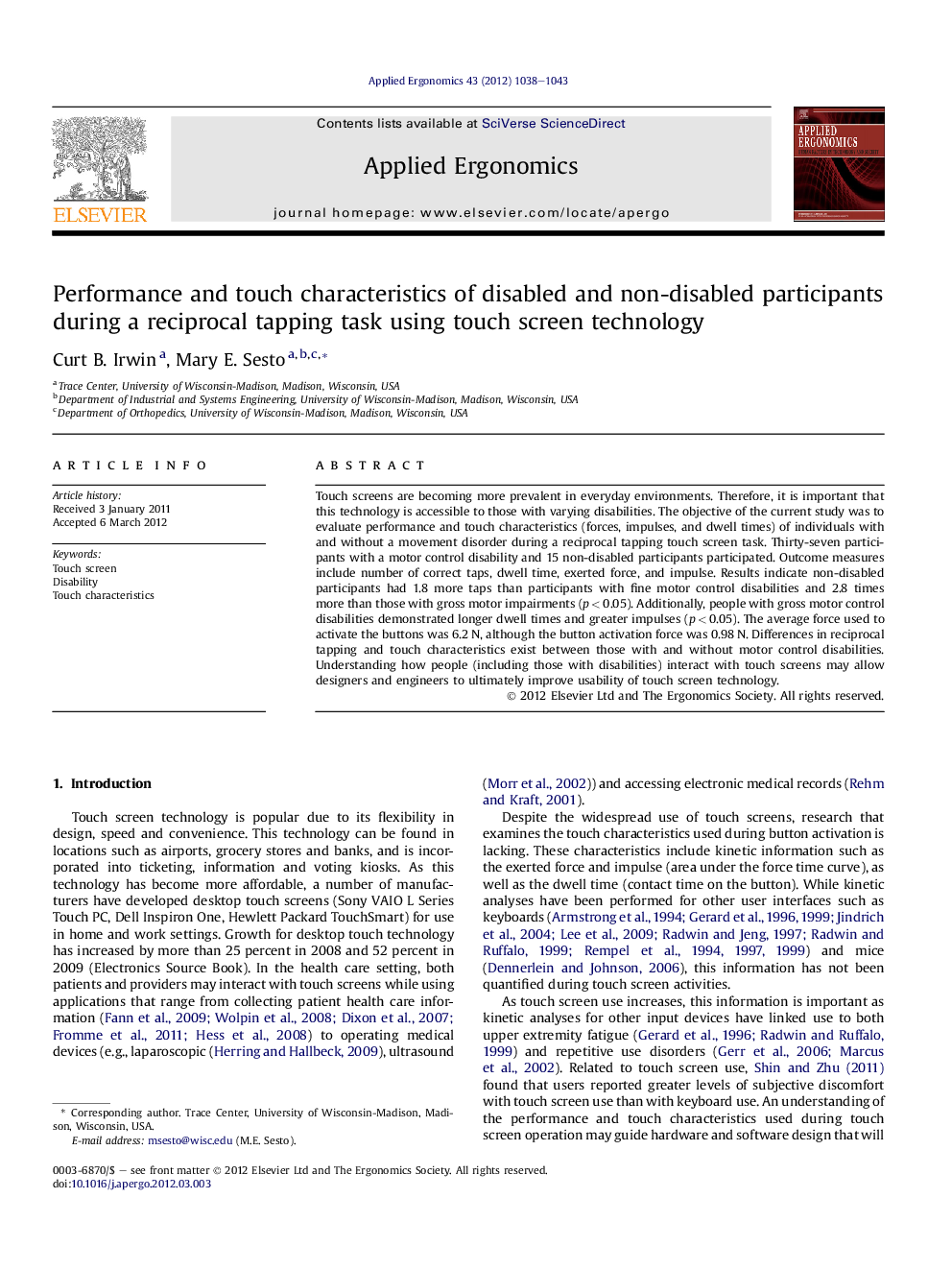| Article ID | Journal | Published Year | Pages | File Type |
|---|---|---|---|---|
| 548499 | Applied Ergonomics | 2012 | 6 Pages |
Touch screens are becoming more prevalent in everyday environments. Therefore, it is important that this technology is accessible to those with varying disabilities. The objective of the current study was to evaluate performance and touch characteristics (forces, impulses, and dwell times) of individuals with and without a movement disorder during a reciprocal tapping touch screen task. Thirty-seven participants with a motor control disability and 15 non-disabled participants participated. Outcome measures include number of correct taps, dwell time, exerted force, and impulse. Results indicate non-disabled participants had 1.8 more taps than participants with fine motor control disabilities and 2.8 times more than those with gross motor impairments (p < 0.05). Additionally, people with gross motor control disabilities demonstrated longer dwell times and greater impulses (p < 0.05). The average force used to activate the buttons was 6.2 N, although the button activation force was 0.98 N. Differences in reciprocal tapping and touch characteristics exist between those with and without motor control disabilities. Understanding how people (including those with disabilities) interact with touch screens may allow designers and engineers to ultimately improve usability of touch screen technology.
► Participants, on average, exerted 6 times more force than required to activate the touch screen. ► Larger exerted forces, combined with increased touch screen use, may result in user fatigue. ► Participants with disabilities had longer dwell times and greater impulses.
